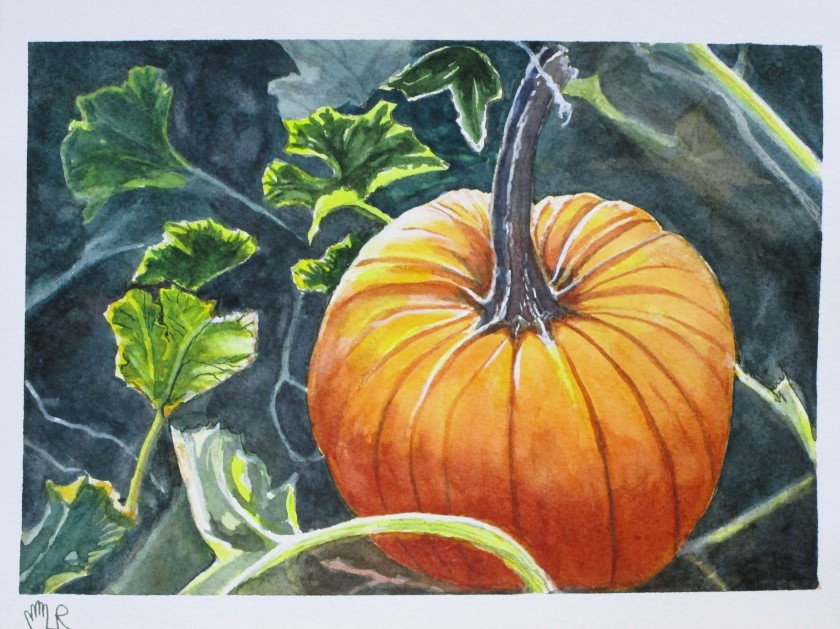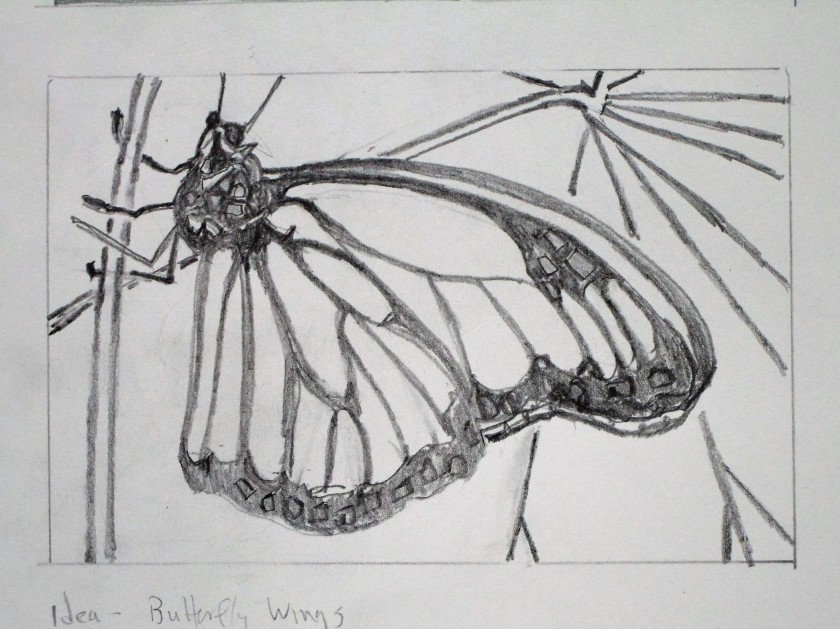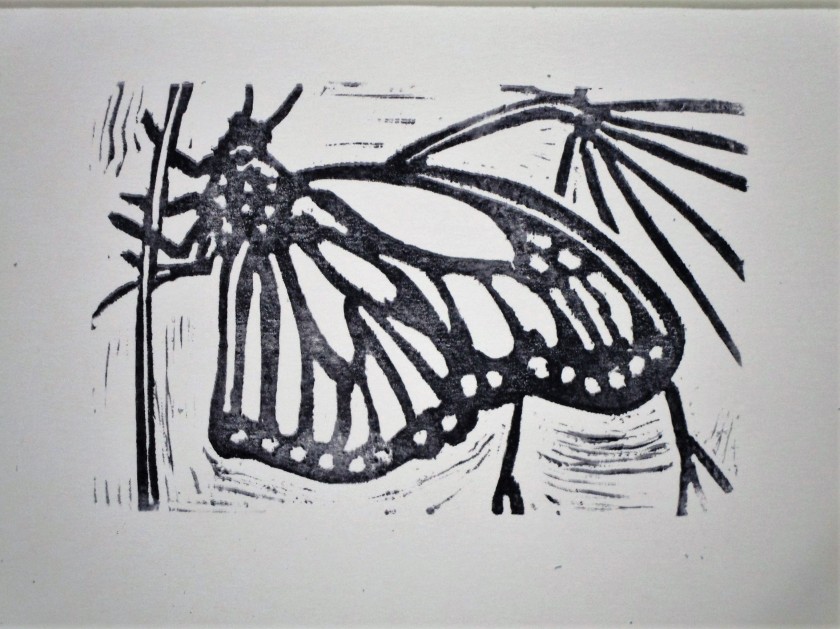
Since completing the Japanese Knot bag (which turned out quite well, IMHO,) I keep thinking about the potential of making art by sewing strips of fabric together. Casting around for some inspiration, I thought about making another abstracted landscape art quilt. Last year’s landscape quilt was inspired by a visit to the Badlands at Roosevelt National Park. My technique of choice for that piece was layered applique. It interests me to try another landscape but this time piece it with blocks made of fabric strips.
In searching suitable references, I returned to this evocative photograph by James Kemp which I had found on Unsplash a few years ago.
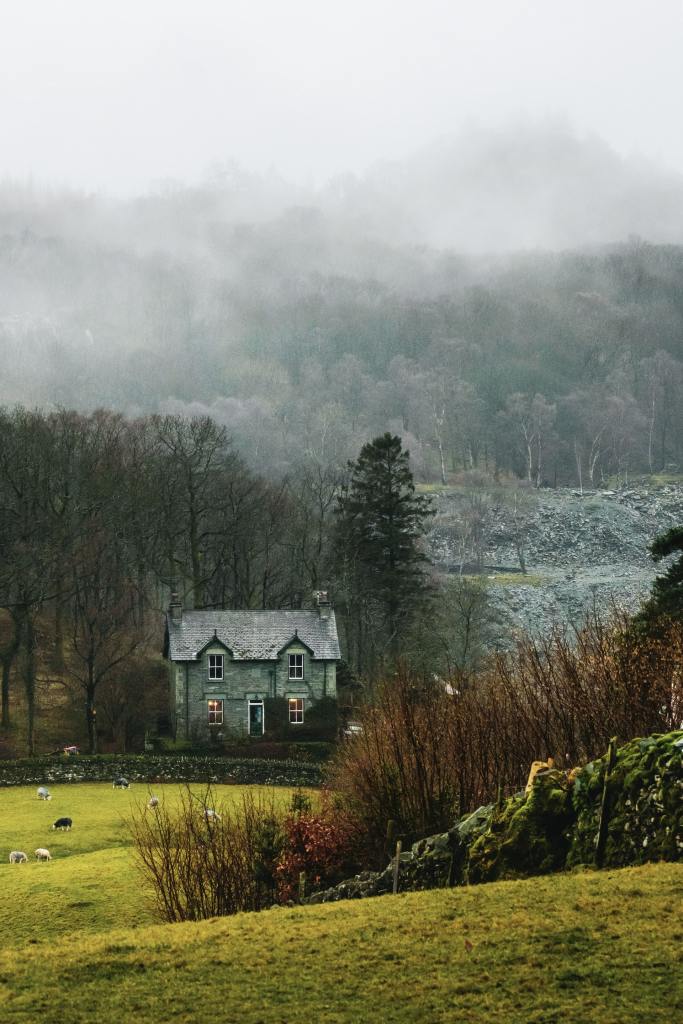
I love the contrast of pale foggy high places, with a midground of dark trees and a foreground of warm grasses and red twigs. If I can simplify the big shapes and translate the photo’s colors to fabric scraps, it could work.
Next I did a quick, scribbly value sketch.

I transferred the major lines to a giant Post-It note, which happened to be full-size for this project. I next drew in a grid of 4 x 4 squares. Using 4 inch blocks, I will need to make 35 blocks.
I started cutting my strips and sorting them by color.
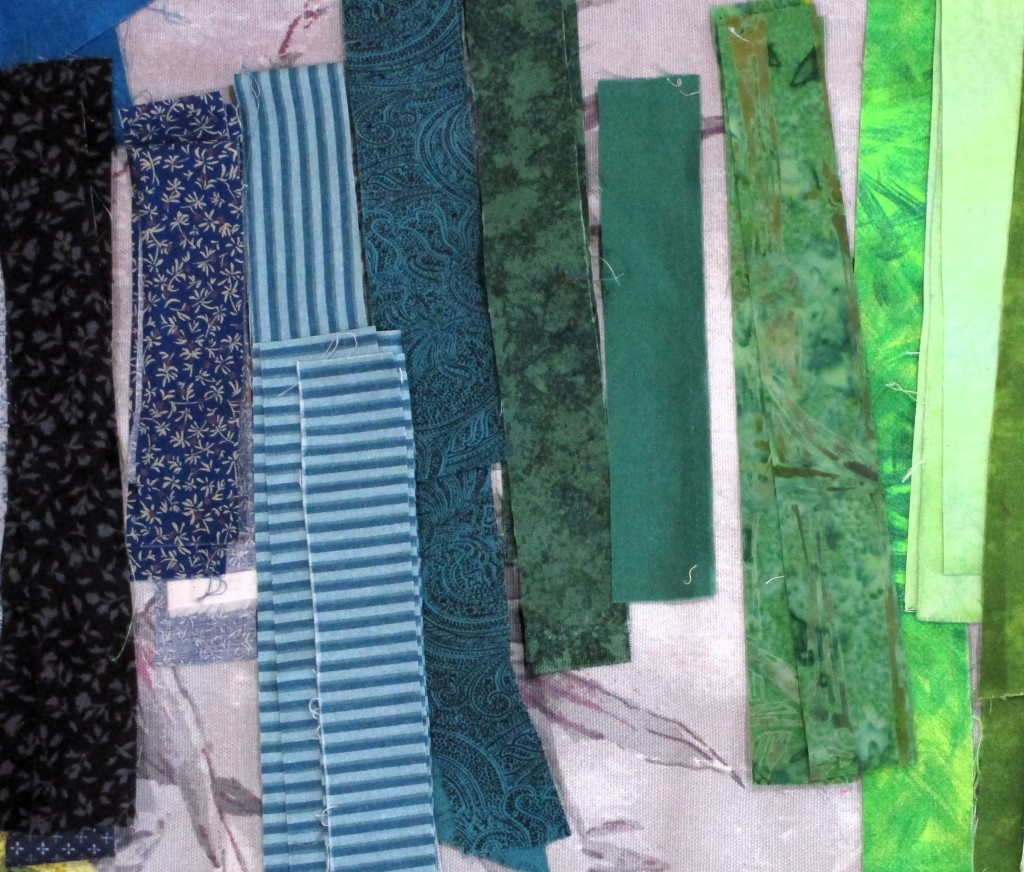
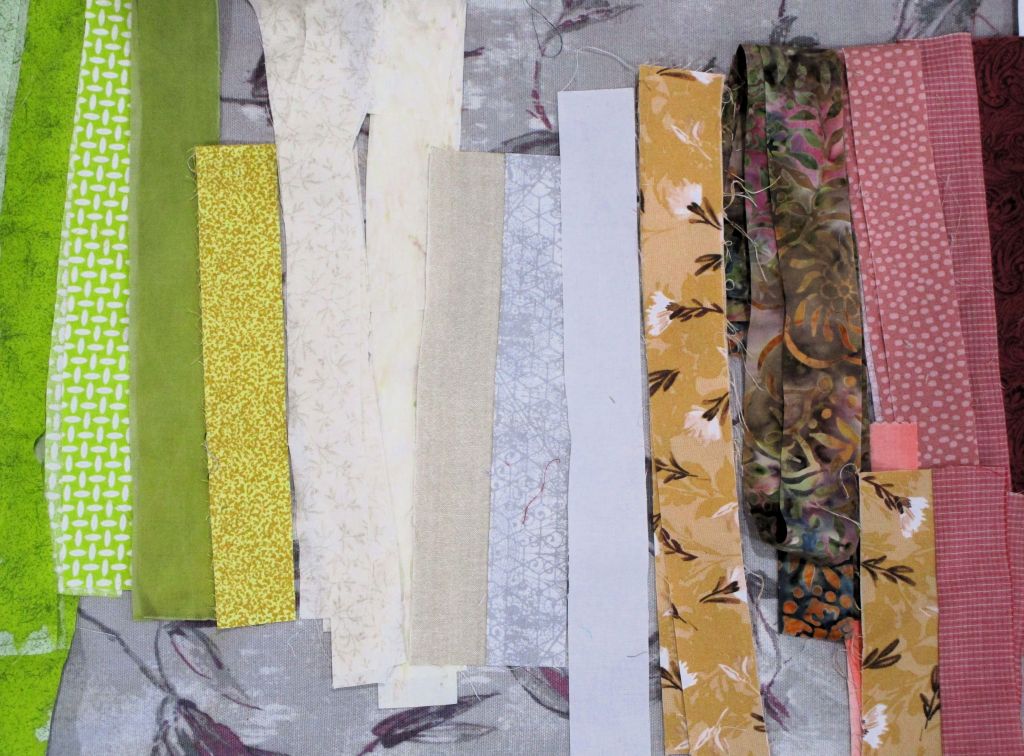
Using the image as my guide, I built sets of six strips, arranged them along the grid and cut them down into squares.
The whole project started to spin out of control. Weirdly enough, instead of getting frustrated, I was drawn into working with more effort and thought.
Two days later, things looked something like this.

No, look away Nothing to see here!
Ah, more like this.
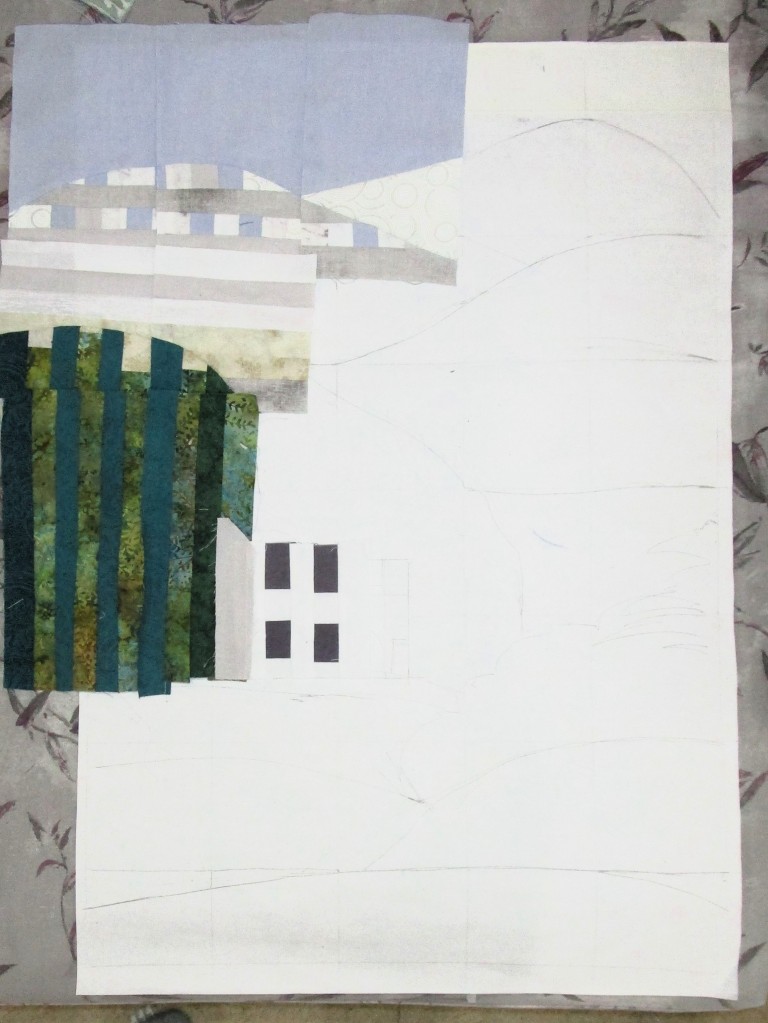
Sad little blocks. Believe me, it does look better IRL than in this photo.
I predict that if it keeps raining, and I can’t go outside and play, I’ll continue to cut, strip and sew on this project.












